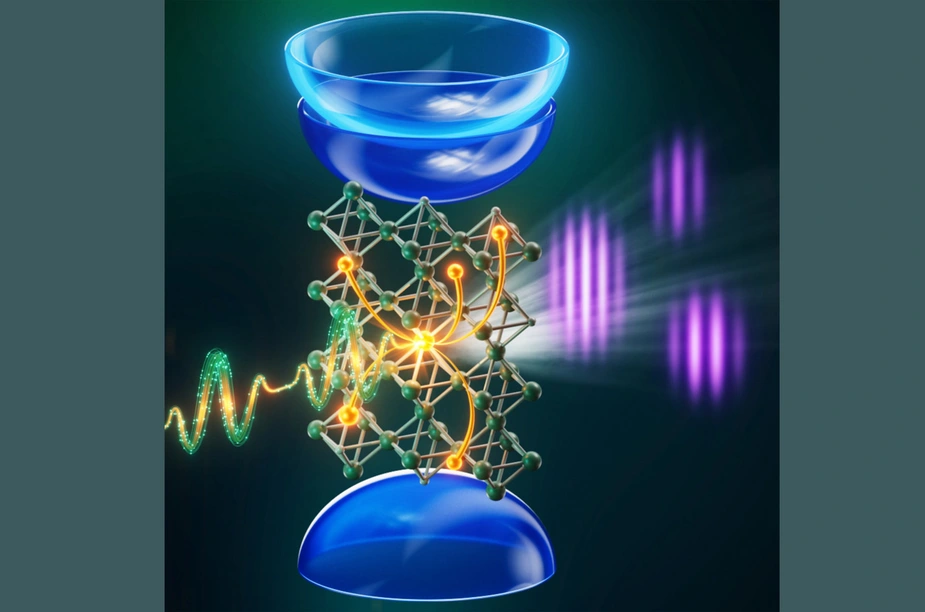Watching bandgaps in motion – attosecond interferometry of solids
Research team establishes a broadly applicable, all-optical probe of band-structure dynamics in solids
The bandgap, i.e. the energy gap between the highest lying valence and the lowest lying conduction band, is a defining property of insulating solids, governing how they absorb light and conduct electricity. Tracking how a bandgap changes under strong laser excitation has been a long-standing challenge, since the underlying processes unfold on femtosecond timescales and are difficult to track directly, especially for wide-bandgap dielectrics.
In a collaboration between the Max-Born-Insitute, ARCNL Amsterdam, and Aarhus University, researchers have now shown that extreme ultraviolet (XUV) high-harmonic interferometry can provide direct access to such dynamics.
Using pairs of phase-locked near-infrared laser pulses, the team measured interference fringes and their intensity-dependent shift in the generated high-order harmonics from silica glass (SiO2) and magnesium oxide (MgO).
These fringe shifts encode transient changes of the electronic bandgap, with silica showing signatures of a shrinking bandgap, while MgO exhibits a widening.
The experiments were supported by analytical modeling and semiconductor Bloch-equation simulations, confirming that the observed phase variations are consistent with excitation-induced modifications of the electronic structure.
The work establishes interferometric HHG as a broadly applicable, all-optical probe of band-structure dynamics in solids. Beyond fundamental insight, this approach opens pathways toward ultrafast semiconductor metrology and future petahertz electro-optic technologies.
Publication:
Extreme ultraviolet high-harmonic interferometry of excitation-induced bandgap dynamics in solids
Lisa-Marie Koll, Simon Vendelbo Bylling Jensen, Pieter J. van Essen, Brian de Keijzer, Emilia Olsson, Jon Cottom, Tobias Witting, Anton Husakou, Marc J. J. Vrakking, Lars Bojer Madsen, Peter M. Kraus, Peter Jürgens
Optica 12, 1606-1614 (2025). URL, DOI oder PDF
Contact:
Max Born Institut for Nonlinear Optics and Short Pulse Spectrocopy
Dr. Tobias Witting
Ultrafast XUV-Physics
+49 30 6392-1228
tobias.witting(at)mbi-berlin.de
mbi-berlin.de
MBI press release, 9 October 2025
